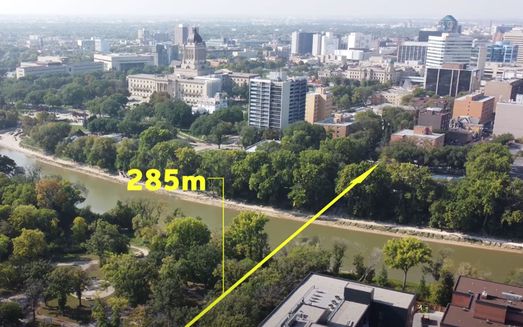Located 13.5 m below the riverbed, the stage is set for power to flow deep under the Assiniboine River. The W9 River Crossing Replacement Project, which began just over a year ago, is about to wrap.
W9 River Crossing Replacement Project
Working off the banks of the mighty Assiniboine River, our crews pull together to restore backup power to Downtown Winnipeg.
“We are almost at the point of reconnecting power. Once the cables have been tested to meet our standards, we will be able to commission the new feed and have the capacity to supply a large section of downtown with reliable electricity,” says Manitoba Hydro’s construction community liaison Craig Sambrooke.
How did we do it?
Work started after our crews identified damaged sections of cable running under the Assiniboine River between McFadyen Park on Assiniboine Ave. and Fort Rouge Park off River Ave. This cable delivered backup power to a large section of downtown.
Without the backup cable, downtown Winnipeg could be without power for a lot longer if there was an outage. To fix it, we had to run new cables under the river.
Our underground construction crews installed concrete vaults to house the new connections in each park, and our contractors used a boring machine to drill underground from park to park — down to the depth of bedrock.

Prepping the final cable for the long pull under the Assiniboine river.
Our contractors pulled conduit pipe through the bored hole, and after pressure testing, we pulled our lubricated, high-voltage cables through each of the conduits.
While the ground was open, we removed the original damaged sections of the cable.
Keeping the neighbours informed
“Because this work was happening in high-traffic areas, it was very important for us to communicate with the local community about what we were doing and to make sure we were having as little impact as possible on their use of these parks,” says Sambrooke.
In any project where public safety is a concern, we let the community know what’s going on. For this project, we used site signage, sent out postcards, advertised on social media, and sent out automated calls. Safety is of the utmost importance to Manitoba Hydro, and when the crews were not on-site, metal fencing was installed around the excavation to protect the public.
Work is scheduled to be complete in early 2024 with site restoration to take place in spring 2024.





